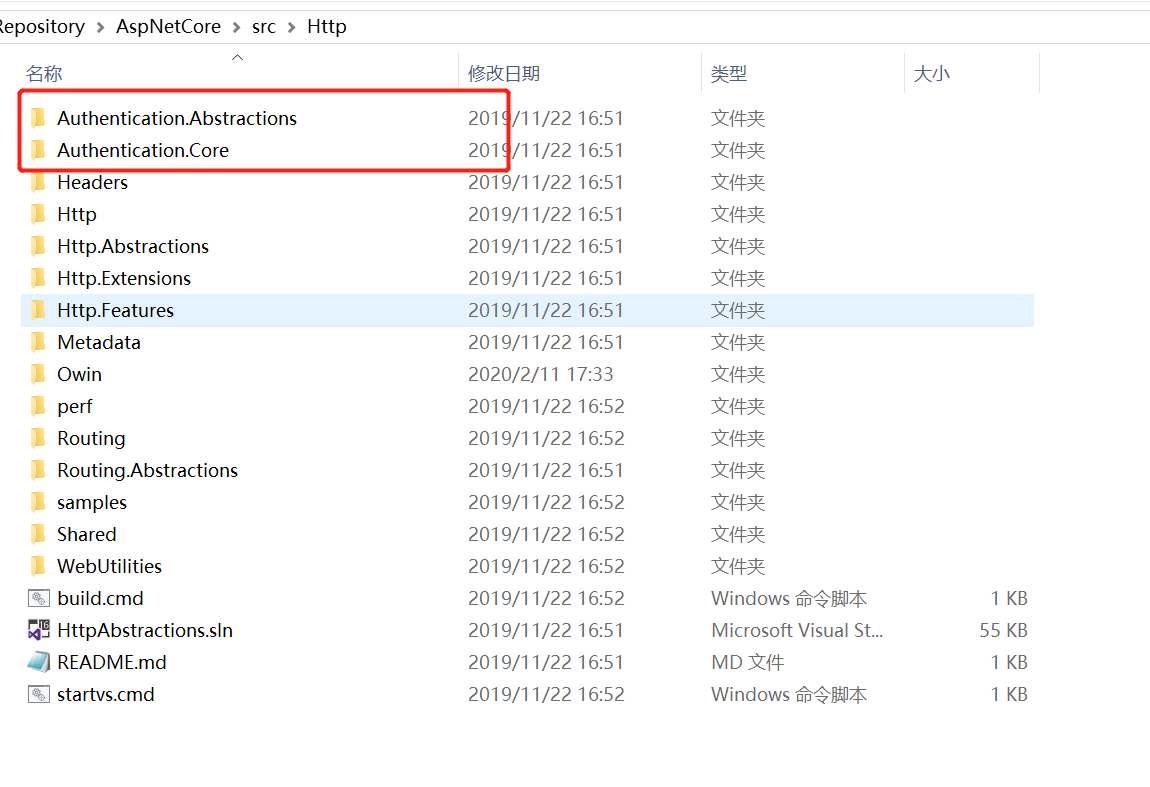文章目录
- AspNetCore3.1_Secutiry源码解析_1_目录
- AspNetCore3.1_Secutiry源码解析_2_Authentication_核心项目
- AspNetCore3.1_Secutiry源码解析_3_Authentication_Cookies
- AspNetCore3.1_Secutiry源码解析_4_Authentication_JwtBear
- AspNetCore3.1_Secutiry源码解析_5_Authentication_OAuth
- AspNetCore3.1_Secutiry源码解析_6_Authentication_OpenIdConnect
- AspNetCore3.1_Secutiry源码解析_7_Authentication_其他
- AspNetCore3.1_Secutiry源码解析_8_Authorization_授权框架
依赖注入
框架提供了三个依赖注入重载方法。
//注入认证服务
services.AddAuthentication();
//注入认证服务并制定默认架构名
services.AddAuthentication("Cookies");
//注入认证服务并设置配置项
services.AddAuthentication(config =>
{
});
看看注入代码
public static AuthenticationBuilder AddAuthentication(this IServiceCollection services)
{
if (services == null)
{
throw new ArgumentNullException(nameof(services));
}
services.AddAuthenticationCore();
services.AddDataProtection();
services.AddWebEncoders();
services.TryAddSingleton<ISystemClock, SystemClock>();
return new AuthenticationBuilder(services);
}
AddAuthenticationCore注入了认证服务的核心对象。这个方法在Authentication.Core项目,这个项目定义了认证服务的核心对象,在Authentication.Abstractions项目中定义了核心接口。

AddAuthenticationCore方法注入了IAuthenticationService,IClaimsTransformation,IAuthenticationHandlerProvider,IAuthenticationSchemeProvider
public static IServiceCollection AddAuthenticationCore(this IServiceCollection services)
{
if (services == null)
{
throw new ArgumentNullException(nameof(services));
}
services.TryAddScoped<IAuthenticationService, AuthenticationService>();
services.TryAddSingleton<IClaimsTransformation, NoopClaimsTransformation>(); // Can be replaced with scoped ones that use DbContext
services.TryAddScoped<IAuthenticationHandlerProvider, AuthenticationHandlerProvider>();
services.TryAddSingleton<IAuthenticationSchemeProvider, AuthenticationSchemeProvider>();
return services;
}
IAuthenticationService
认证服务,定义了五个方法
- AuthenticateAsync: 认证
- ChallengeAsync:挑战,校验认证
- ForbidAsync:禁止认证
- SignInAsync:登入
- SignOutAsync:登出
通过AuthenticateAsync方法源代码可以看到,AuthenticateService只是做了控制器的角色,校验schema,根据schema获取handler,主要的认证逻辑是由handler处理。其他的方法基本也是这样的逻辑。
public virtual async Task<AuthenticateResult> AuthenticateAsync(HttpContext context, string scheme)
{
if (scheme == null)
{
var defaultScheme = await Schemes.GetDefaultAuthenticateSchemeAsync();
scheme = defaultScheme?.Name;
if (scheme == null)
{
throw new InvalidOperationException($"No authenticationScheme was specified, and there was no DefaultAuthenticateScheme found. The default schemes can be set using either AddAuthentication(string defaultScheme) or AddAuthentication(Action<AuthenticationOptions> configureOptions).");
}
}
var handler = await Handlers.GetHandlerAsync(context, scheme);
if (handler == null)
{
throw await CreateMissingHandlerException(scheme);
}
var result = await handler.AuthenticateAsync();
if (result != null && result.Succeeded)
{
var transformed = await Transform.TransformAsync(result.Principal);
return AuthenticateResult.Success(new AuthenticationTicket(transformed, result.Properties, result.Ticket.AuthenticationScheme));
}
return result;
}
IClaimsTransformation
该接口只有一个方法,用于转换Claims。默认注入的NoopClaimsTransformation,不会做任何操作。如果需要对Claims做一些处理,实现IClaimsTransformation并覆盖注入就可以了。
public class NoopClaimsTransformation : IClaimsTransformation
{
/// <summary>
/// Returns the principal unchanged.
/// </summary>
/// <param name="principal">The user.</param>
/// <returns>The principal unchanged.</returns>
public virtual Task<ClaimsPrincipal> TransformAsync(ClaimsPrincipal principal)
{
return Task.FromResult(principal);
}
}
IAuthenticationHandlerProvider
上面提到过handler处理了主要的认证业务逻辑,这个接口可以根据schema获取handler。
IAuthenticationSchemeProvider
该接口主要定义了一些schema的操作方法。
AuthenticationScheme主要有三个属性,通过HandlerType与handler建立了关联。
认证流程
其他
除了核心对象,还注入了用于数据保护和解码的辅助对象
services.AddDataProtection();
services.AddWebEncoders();
Authentication中间件
中间件会优先在容器中找IAuthenticationRequestHandler的实现,如果handler不为空的话,则执行handler的HandleRequestAsync方法。IAuthenticationRequestHandler通常在远程认证(如:OAuth, OIDC等)中使用。
如果没有IAuthenticationRequestHandler的实现,则会找默认schema,执行默认schema对应handler的AuthenticationAsync方法,认证成功后,给HttpContext的User对象赋值。
public async Task Invoke(HttpContext context)
{
context.Features.Set<IAuthenticationFeature>(new AuthenticationFeature
{
OriginalPath = context.Request.Path,
OriginalPathBase = context.Request.PathBase
});
// Give any IAuthenticationRequestHandler schemes a chance to handle the request
var handlers = context.RequestServices.GetRequiredService<IAuthenticationHandlerProvider>();
foreach (var scheme in await Schemes.GetRequestHandlerSchemesAsync())
{
var handler = await handlers.GetHandlerAsync(context, scheme.Name) as IAuthenticationRequestHandler;
if (handler != null && await handler.HandleRequestAsync())
{
return;
}
}
var defaultAuthenticate = await Schemes.GetDefaultAuthenticateSchemeAsync();
if (defaultAuthenticate != null)
{
var result = await context.AuthenticateAsync(defaultAuthenticate.Name);
if (result?.Principal != null)
{
context.User = result.Principal;
}
}
await _next(context);
}